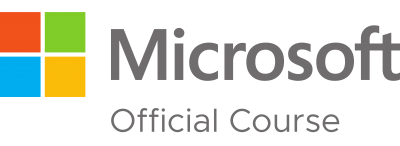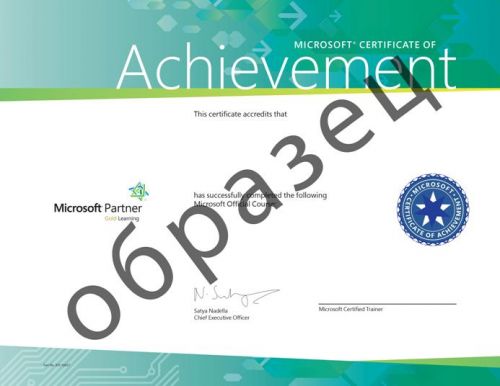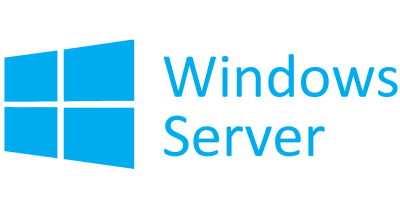Планирование и внедрение решений Microsoft DevOps (AZ-400T00)

Designing and Implementing Microsoft DevOps solutions
Курс предоставляет знания и навыки необходимые для проектирования и внедрения процессов и практик DevOps. Слушатели научатся планированию DevOps, методам контроля исходного кода, разработке стратегии управления зависимостями, обеспечению безопасности, выработке стратегии релизов и использованию различных механизмов для получения обратной связи.
Целевая аудитория
Разработчики и ИТ-менеджеры, заинтересованные во внедрении процессов и практик DevOps.
Предварительные требования
- знания MS Azure;
- опыт разработки ПО с использованием контроля версий;
- опыт разработки ПО с использованием практик Agile.
Приобретаемые знания и навыки
По окончании курса слушатели смогут:
- Планировать проекты и определять KPI проекта;
- Создавать команды разработки;
- Знать преимущества и использовать в своей работе контроль исходного кода;
- Выполнять миграцию с Team Foundation Version Control в Git;
- Рекомендовать практики и инструменты по работе с артефактами;
- Управлять конфигурацией и секретами приложений;
- Управлять качеством проекта;
- Создавать и внедрять необходимую инфраструктуру;
- Внедрять контейнеры Docker;
- Использовать различные механизмы получения обратной связи.
Программа курса
Module 1: Introduction to DevOps
- Understand what DevOps is and the steps to accomplish it
- Identify teams to implement the process
- Plan for the transformation with shared goals and timelines
- Plan and define timelines for goals
Module 2: Choose the right project
- Understand different projects and systems to guide the journey
- Select a project to start the DevOps transformation
- Identify groups to minimize initial resistance
- Identify project metrics and Key Performance Indicators (KPI's)
Module 3: Describe team structures
- Understand agile practices and principles of agile development
- Create a team and agile organizational structure
- Identify ideal DevOps team members
- Select and configure tools for collaboration
Module 4: Choose the DevOps tools
- Design a tool integration strategy
- Design a license management strategy (e.g. Azure DevOps and GitHub users)
- Design a strategy for end-to-end traceability from work items to working software
- Design an authentication and access strategy
- Design a strategy for integrating on-premises and cloud resources
Module 5: Plan Agile with GitHub Projects and Azure Boards
- Describe GitHub Projects and Azure Boards
- Link Azure Boards and GitHub
- Configure and Manage GitHub Projects and boards
- Customize Project views
Module 6: Introduction to source control
- Understand source control
- Apply best practices for source control
- Describe the benefits of using source control
Module 7: Describe types of source control systems
- Apply source control practices in your development process
- Explain differences between centralized and distributed version control
- Understand Git and TFVC
- Develop using Git
Module 8: Work with Azure Repos and GitHub
- Describe Azure Repos and GitHub
- Migrate from TFVC to Git
- Work with GitHub Codespaces
Module 9: Structure your Git Repo
- Understand Git repositories
- Implement mono repo or multiple repos
- Explain how to structure Git Repos
- Implement a change log
Module 10: Manage Git branches and workflows
- Describe Git branching workflows
- Implement feature branches
- Implement GitHub Flow
- Fork a repo
Module 11: Collaborate with pull requests in Azure Repos
- Leverages pull requests for collaboration and code reviews
- Give feedback using pull requests
- Configure branch policies
- Use GitHub mobile for pull requests approvals
Module 12: Identify technical debt
- Identify and manage technical debt
- Integrate code quality tools
- Plan code reviews
- Describe complexity and quality metrics
Module 13: Explore Git hooks
- Understand Git hooks
- Identify when used Git hooks
- Implement Git hooks for automation
- Explain Git hooks' behavior
Module 14: Plan foster inner source
- Use Git to foster inner source across the organization
- Implement fork workflow
- Choose between branches and forks
- Share code between forks
Module 15: Manage Git repositories
- Understand large Git repositories
- Explain VFS for Git
- Use Git Large File Storage (LFS)
- Purge repository data
- Manage and Automate Release Notes with GitHub
Module 16: Explore Azure Pipelines
- Describe Azure Pipelines
- Explain the role of Azure Pipelines and its components
- Decide Pipeline automation responsibility
- Understand Azure Pipeline key terms
Module 17: Manage Azure Pipeline agents and pools
- Choose between Microsoft-hosted and self-hosted agents
- Install and configure Azure Pipelines Agents
- Configure agent pools
- Make the agents and pools secure
- Explore communication to deploy using Azure Pipelines
Module 18: Describe pipelines and concurrency
- Use and estimate parallel jobs
- Use Azure Pipelines for open-source or private projects
- Use Visual Designer
- Work with Azure Pipelines and YAML
Module 19: Explore continuous integration
- Explain why continuous integration matters
- Implement continuous integration using Azure Pipelines
- Explain benefits of continuous integration
- Describe build properties
Module 20: Implement a pipeline strategy
- Define a build strategy
- Explain and configure demands
- Implement multi-agent builds
- Use different source control types available in Azure Pipelines
Module 21: Integrate with Azure Pipelines
- Describe advanced Azure Pipelines anatomy and structure
- Detail templates and YAML resources
- Implement and use multiple repositories
Module 22: Introduction to GitHub Actions
- Explain GitHub Actions and workflows
- Create and work with GitHub Actions and Workflows
- Describe Events, Jobs and Runners
- Examine output and release management for actions
Module 23: Learn continuous integration with GitHub Actions
- Implement Continuous Integration with GitHub Actions
- Use environment variables
- Share artifacts between jobs and use Git tags
- Create and manage secrets
Module 24: Design a container build strategy
- Design a container strategy
- Work with Docker Containers
- Create an Azure Container Registry
- Explain Docker microservices and containers
Module 25: Introduction to continuous delivery
- Explain continuous delivery (CD)
- Implement continuous delivery in your development cycle
- Understand releases and deployment
- Identify project opportunities to apply CD
Module 26: Create a release pipeline
- Explain the terminology used in Azure DevOps and other Release Management Tooling
- Describe what a Build and Release task is, what it can do, and some available deployment tasks
- Implement release jobs
Module 27: Explore release recommendations
- Explain things to consider when designing your release strategy
- Define the components of a release pipeline and use artifact sources
- Create a release approval plan
- Implement release gates
Module 28: Provision and test environments
- Provision and configure target environment
- Deploy to an environment securely using a service connection
- Configure functional test automation and run availability tests
- Setup test infrastructure
Module 29: Manage and modularize tasks and templates
- Use and manage task and variable groups
- Use release variables and stage variables in your release pipeline
- Use variables in release pipelines
Module 30: Automate inspection of health
- Implement automated inspection of health
- Create and configure events
- Configure notifications in Azure DevOps and GitHub
- Create service hooks to monitor pipeline
- Classify a release versus a release process, and outline how to control the quality of both
- Choose a release management tool
Module 31: Introduction to deployment patterns
- Describe deployment patterns
- Explain microservices architecture
- Understand classical and modern deployment patterns
- Plan and design your architecture
Module 32: Implement blue-green deployment and feature toggles
- Explain deployment strategies
- Implement blue green deployment
- Understand deployment slots
- Implement and manage feature toggles"
Module 33: Implement canary releases and dark launching
- Describe deployment strategies
- Implement canary release
- Explain traffic manager
- Understand dark launching
Module 34: Implement A/B testing and progressive exposure deployment
- Implement progressive exposure deployment
- Implement A/B testing
- Implement CI/CD with deployment rings
- Identify the best deployment strategy
Module 35: Integrate with identity management systems
- Integrate Azure DevOps with identity management systems
- Integrate GitHub with single sign-on (SSO)
- Understand and create a service principal
- Create managed service identities
Module 36: Manage application configuration data
- Rethink application configuration data
- Understand separation of concerns
- Integrate Azure Key Vault with Azure Pipelines
- Manage secrets, tokens and certificates
- Describe Azure App Configuration
- Understand Key-value pairs
- Understand app configuration feature management
- Implement application configuration
Module 37: Explore infrastructure as code and configuration management
- Understand how to deploy your environment
- Plan your environment configuration
- Choose between imperative versus declarative configuration
- Explain idempotent configuration
Module 38: reate Azure resources using Azure Resource Manager templates
- Create Azure resources using Azure Resource Manager templates
- Understand Azure Resource Manager templates and template components
- Manage dependencies and secrets in templates
- Organize and modularize templates
Module 39: Create Azure resources by using Azure CLI
- Create Azure resources using Azure CLI
- Understand and work with Azure CLI
- Run templates using Azure CLI
- Explains Azure CLI commands
Module 40: Explore Azure Automation with DevOps
- Implement automation with Azure DevOps
- Create and manage runbooks
- Create webhooks
- Create and run a workflow runbook and PowerShell workflows
Module 41: Implement Desired State Configuration (DSC)
- Implement Desired State Configuration (DSC)
- Describe Azure Automation State Configuration
- Implement DSC and Linux Automation on Azure
- Plan for hybrid management
Module 42: Implement Bicep
- Learn what Bicep is
- Learn how to install it and create a smooth authoring experience
- Use Bicep to deploy resources to Azure
- Deploy Bicep files in Cloud Shell and Visual Studio Code
Module 43: Introduction to Secure DevOps
- Identify SQL injection attack
- Understand DevSecOps
- Implement pipeline security
- Understand threat modeling
Module 44: Implement open-source software
- Implement open-source software
- Explain corporate concerns for open-source components
- Describe open-source licenses
- Understand the license implications and ratings
Module 45: Software Composition Analysis
- Inspect and validate code bases for compliance
- Integrate security tools like WhiteSource with Azure DevOps
- Implement pipeline security validation
- Interpret alerts from scanning tools
- Configure GitHub Dependabot alerts and security
Module 46: Static analyzers
- Understand Static Analyzers
- Work with SonarCloud
- Work with CodeQL in GitHub
- Interpret alerts from scanning tools
Module 47: OWASP and Dynamic Analyzers
- Understand OWASP and Dynamic Analyzers
- Implement OWASP Security Coding Practices
- Understand compliance for code bases
Module 48: Security Monitoring and Governance
- Configure Microsoft Defender for Cloud
- Understand Azure policies
- Describe initiatives, resource locks and Azure Blueprints
- Work with Microsoft Defender for Identity
Module 49: Explore package dependencies
- Define dependency management strategy
- Identify dependencies
- Describe elements and componentization of a dependency management
- Scan your codebase for dependencies
Module 50: Understand package management
- Implement package management
- Manage package feed
- Consume and create packages
- Publish packages
Module 51: Migrate consolidating and secure artifacts
- Identify artifact repositories
- Migrate and integrate artifact repositories
- Secure package feeds
- Understand roles, permissions and authentication
Module 52: Implement a versioning strategy
- Implement a versioning strategy
- Promote packages
- Push packages from pipeline
- Describe semantic and explore best practices for versioning
Module 53: Introduction to GitHub Packages
- Publish packages
- Install packages
- Delete and restore packages
- Configure access control and visibility
Module 54: Implement tools to track usage and flow
- Implement tools to track feedback
- Plan for continuous monitoring
- Implement Application Insights
- Use Kusto Query Language (KQL)
Module 55: Develop monitor and status dashboards
- Configure Azure Dashboards
- Work with View Designer in Azure Monitor
- Create Azure Monitor Workbooks
- Monitor with Power BI
Module 56: Share knowledge within teams
- Share knowledge with development teams
- Work with Azure DevOps Wikis
- Integrate with Azure Boards
Module 57: Design processes to automate application analytics
- Automate application analytics
- Assist DevOps with rapid responses and augmented search
- Integrate telemetry
- Implement monitoring tools and technologies
Module 58: Manage alerts, blameless retrospectives and a just culture
- Carry out blameless retrospectives and create a just culture
- Improve application performance
- Explain server response time degradation
- Reduce meaningless and non-actionable alerts
Документы об окончании курса
- Сертификат Microsoft об окончании авторизованного курса
- Сертификат Учебного центра Noventiq
- Cертификат об обучении установленного образца








